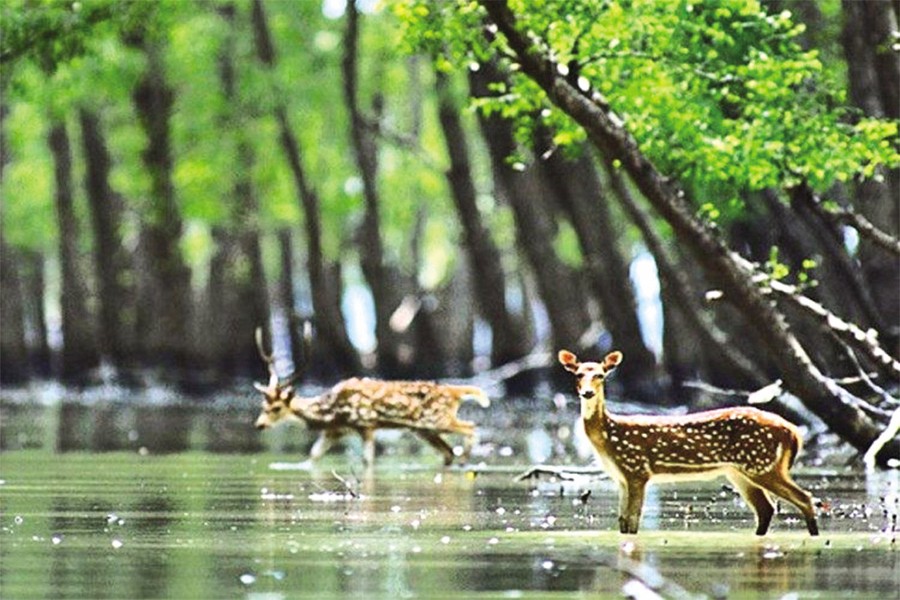Tourism in the Sundarbans would now be costlier than earlier as the government has doubled its levy after a decade.
All the fees and non-tax revenue rates have been increased on an average for tourists and their vessels as well as wood, fish, honey, wax, crab, cane, Shell and other products of the mangrove forest.
The Ministry of Environment, Forest and Climate Change issued a Gazette notification recently, making the new rates and fees effective from February 26, 2022.
Talking to the FE, DoE chief conservator of forest, Khulna Mihir Kumar said the tax rates have been revised upward after a decade, considering the government's resource constraints.
He said the field-level offices have already started implementing the revised tax rates with the new charges and fees.
He, however, said the VAT at 15 per cent would be applicable with the service charges too.
The decision on increasing the tax rates was taken on December 26, 2021 by the non-tax revenue wing, treasury and loan management department of the Finance Division.
The tax rates for Sundori, Pashur, Kakra, Kaora, Bain, Geoya, Dhundol have been fixed on the basis of their respective widths.
For honey, wax, Golpata, Goran, Shell, Grass, Cane, fish, Hetal and other forest flammable products, the tax would be imposed per quintal.
The fishermen who live in boats, launches or trawlers have to pay a minimum tax too.
For tourists' launch, trawler, speedboat, boat, the tax rates have been doubled for one-time registration and renewal for a year.
For entertainment tours, the tax rate would be three to four times higher for unregistered water vessels than that of the registered ones.
In case of staying more than a day in the Sundarbans, there would be per day taxes for tourists' vessels.
The tax rate is higher in the sanctuary than a normal forest visit.
The tourists have to count taxes with entry fee and video camera. The tax rates for researchers, students and children below 12 years are lower than others.
To visit Sundarbans, the local tourists have to pay Tk 150 travel fee while it is Tk 2,000 for foreigners.
In the sanctuary, the non-tax revenue for each foreign tourist is Tk 3,000 per day while it is Tk 300 for a local tourist.
The government-declared sanctuaries in the Sundarbans include Kotka, Kachikhali, Nilkamal, Hironpoint, Notabeki, Pushpakathi, Mandarbaria and Haldebunia.
The number of tourists has increased in the Sundarbans in recent times. Last year, some 160,000 tourists visited the Sundarbans despite Covid-19 pandemic.
However, the tour operators feared that the number of tourists would decline due to the hike in such costs as they have already been struggling to manage the package fees since the diesel price hike.
Tour operator Zannatul Ferdousi Manu, administrator of the Jhatika Safar, said domestic tourism is becoming more expensive day by day due to the hike in different types of unusual costs.
"We had to cancel some of the tour plans this year for exorbitant costs. A middle-income family often considers it difficult to bear Tk 45,000 to Tk 50,000 for a domestic tour," she said.
In the gazette notification, the revenue rates have also been revised upward for Dublar Char Rush Mela-bound devotees.


